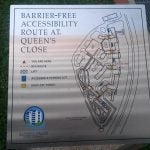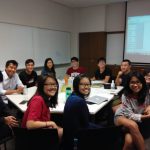Making a Connection with the Elderly in Queen’s Close
In light of the phenomenon of the aging population in Singapore, it is increasingly important to understand not just the needs, but also the assets of the elderly in our community. “Assets” of the elderly would include the skills, knowledge, and expertise, as well as the inherent relationships among people in the community. We collaborated with the Social Services Office (SSO) @Queenstown in a study of the elderly in Queen’s Close, a Housing Development Board (HDB) estate in the Queenstown District. This study was proposed out of two main concerns: access to services was observed to be limited within the Queen’s Close estate, and this situation was further perpetuated by the fact that this estate is physically isolated from the rest of Queenstown.
Our research to understand the Queen’s Close estate was conducted both qualitatively and quantitatively. We applied the principles of rapid ethnography in our research by visiting the estate multiple times a week at various times of the day. We observed the happenings (and non-happenings) in the neighborhood to gain an understanding of the daily interactions among people in the estate. Informal interviews were conducted with the elderly in the neighborhood, and we gained many interesting first-hand accounts of their life stories. In addition, we conducted door-to-door surveys to do a “needs and assets assessment” of the elderly there. Using the assets-based community development approach to understand the Queen’s Close community, we proposed suggestions to promote community development within the estate, such as replacing an under-utilized exercise corner with a community garden, based on the survey of the interests of the elderly and other residents living in the estate.
The findings of our research were shared with SSO to enhance their understanding of the Queen’s Close community. Moreover, we were able to identify residents who required further attention and referred them to SSO for follow-up.
Reflection
“This Capstone experience prompted me to consider the social impact of architecture in a HDB estate like Queen’s Close, as the knowledge I gained allows me to make cross-comparisons with kampongs of the past, as well as other newer HDB estates. We generated data on various themes such as ‘needs of the elderly’, ‘community assets’, and I find that learning in such field settings is more relevant and exciting. Finally, conducting door-to-door surveys was an out-of-comfort-zone experience, especially when wary residents shut the door in our faces. Nonetheless, we gained tremendously from speaking with the other residents; I have become more perceptive with regard to solving problems associated with the aging population, and interacting with the elderly.” –Yvonne Loo Yu Ying, Year 2, Faculty of Arts and Social Sciences
“The general impression of life in HDBs nowadays is that people tend to keep to themselves, and there is no longer a “kampung spirit” due to the lack of interaction. This capstone project made me feel that not all is lost, as there are still some relationships built within the estate, especially among the elderly who regularly gather at the void deck, or between families who have similar interests such as biking. This project has also pushed me beyond my comfort zone to speak to the elderly randomly around the estate. It is through such circumstances that I learn how to build trust in a stranger, and I got to listen to some intimate life stories shared by the elderly who were willing to open their hearts to me. It was a humbling experience.” – Lim Wei Jie, Year 2, Faculty of Arts and Social Sciences



